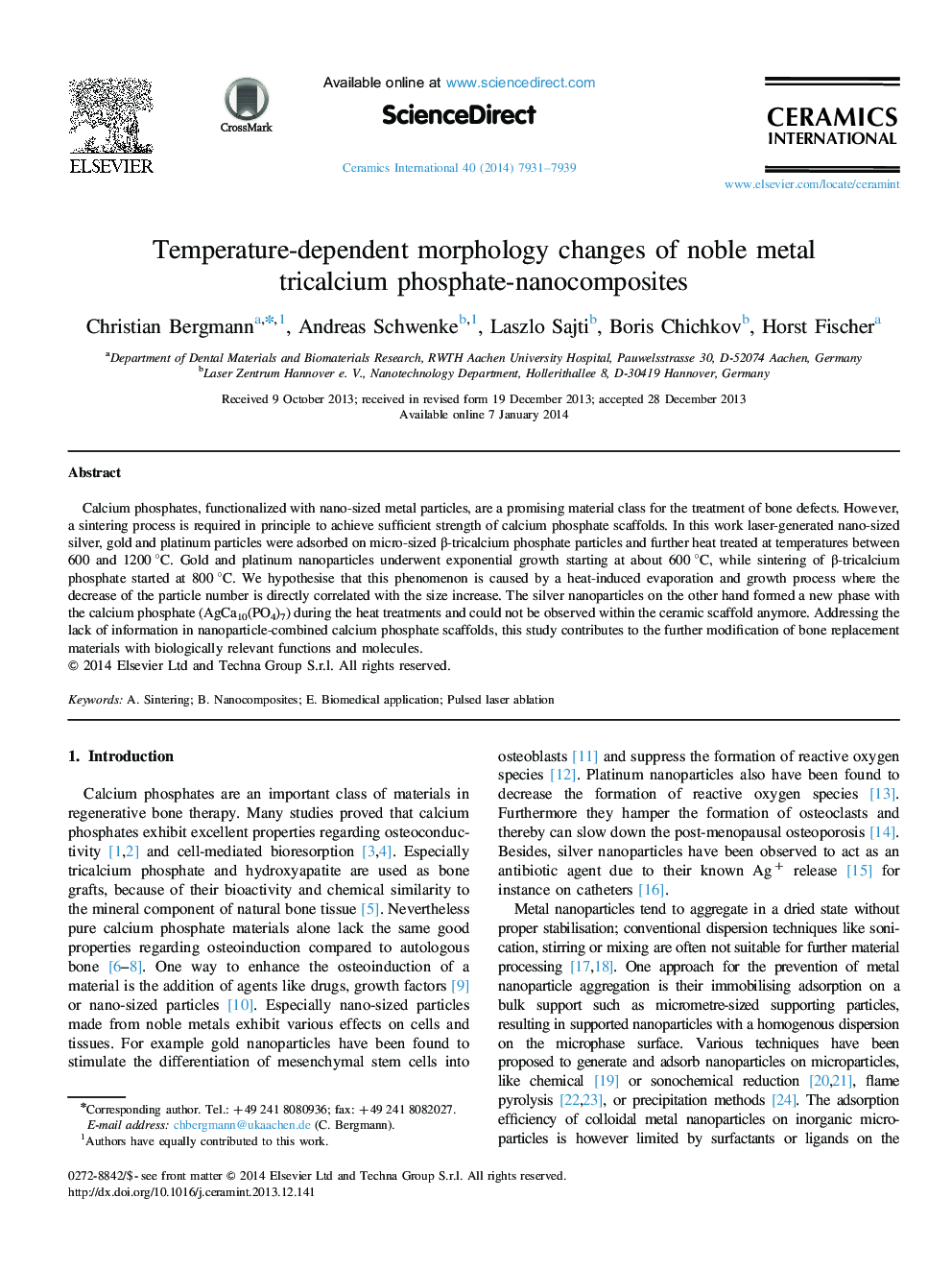| Article ID | Journal | Published Year | Pages | File Type |
|---|---|---|---|---|
| 1461532 | Ceramics International | 2014 | 9 Pages |
Calcium phosphates, functionalized with nano-sized metal particles, are a promising material class for the treatment of bone defects. However, a sintering process is required in principle to achieve sufficient strength of calcium phosphate scaffolds. In this work laser-generated nano-sized silver, gold and platinum particles were adsorbed on micro-sized β-tricalcium phosphate particles and further heat treated at temperatures between 600 and 1200 °C. Gold and platinum nanoparticles underwent exponential growth starting at about 600 °C, while sintering of β-tricalcium phosphate started at 800 °C. We hypothesise that this phenomenon is caused by a heat-induced evaporation and growth process where the decrease of the particle number is directly correlated with the size increase. The silver nanoparticles on the other hand formed a new phase with the calcium phosphate (AgCa10(PO4)7) during the heat treatments and could not be observed within the ceramic scaffold anymore. Addressing the lack of information in nanoparticle-combined calcium phosphate scaffolds, this study contributes to the further modification of bone replacement materials with biologically relevant functions and molecules.
